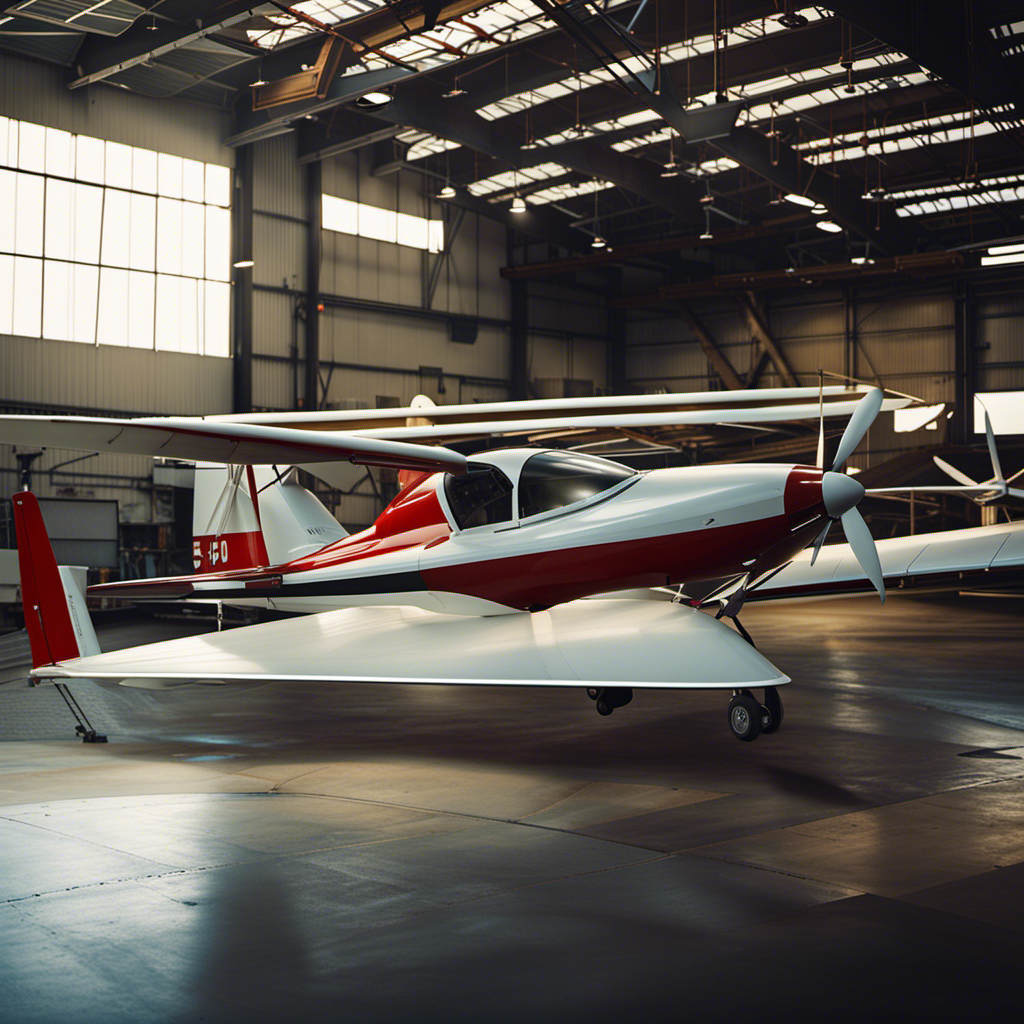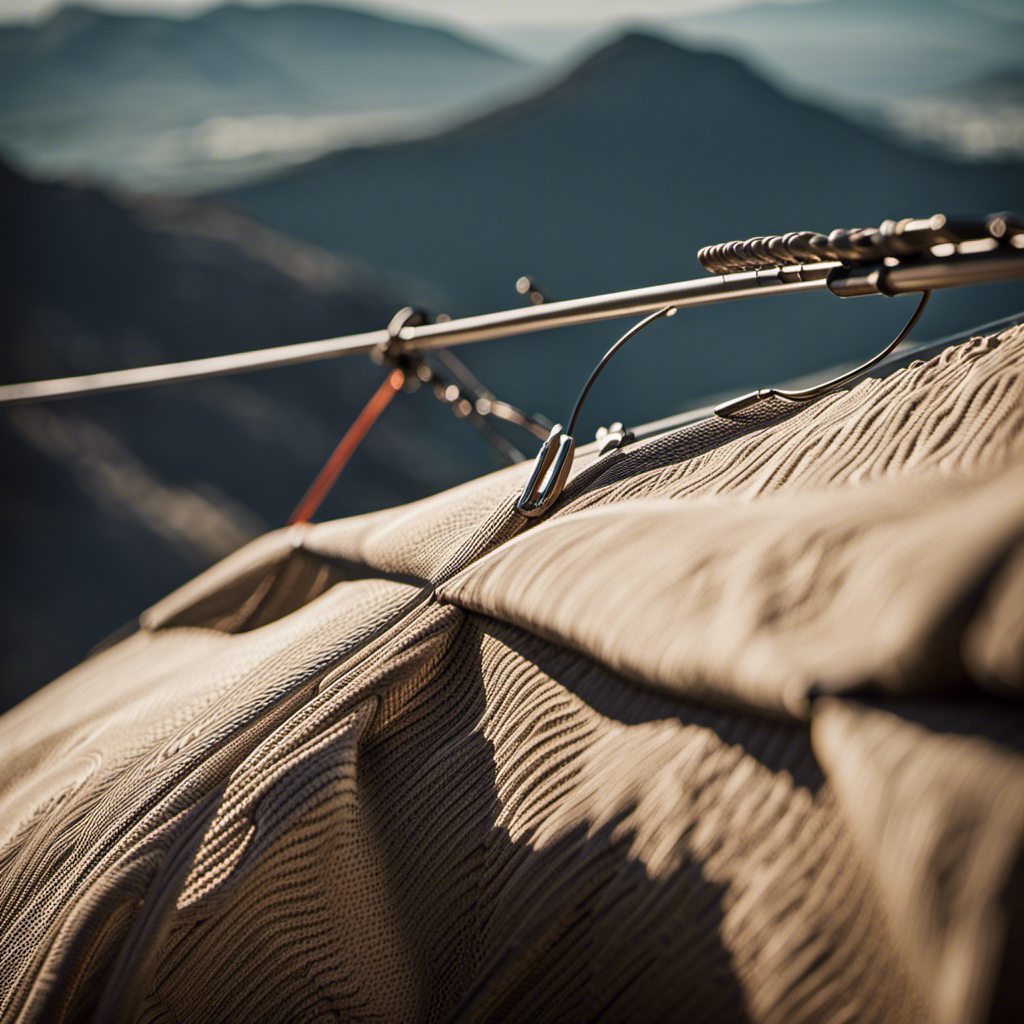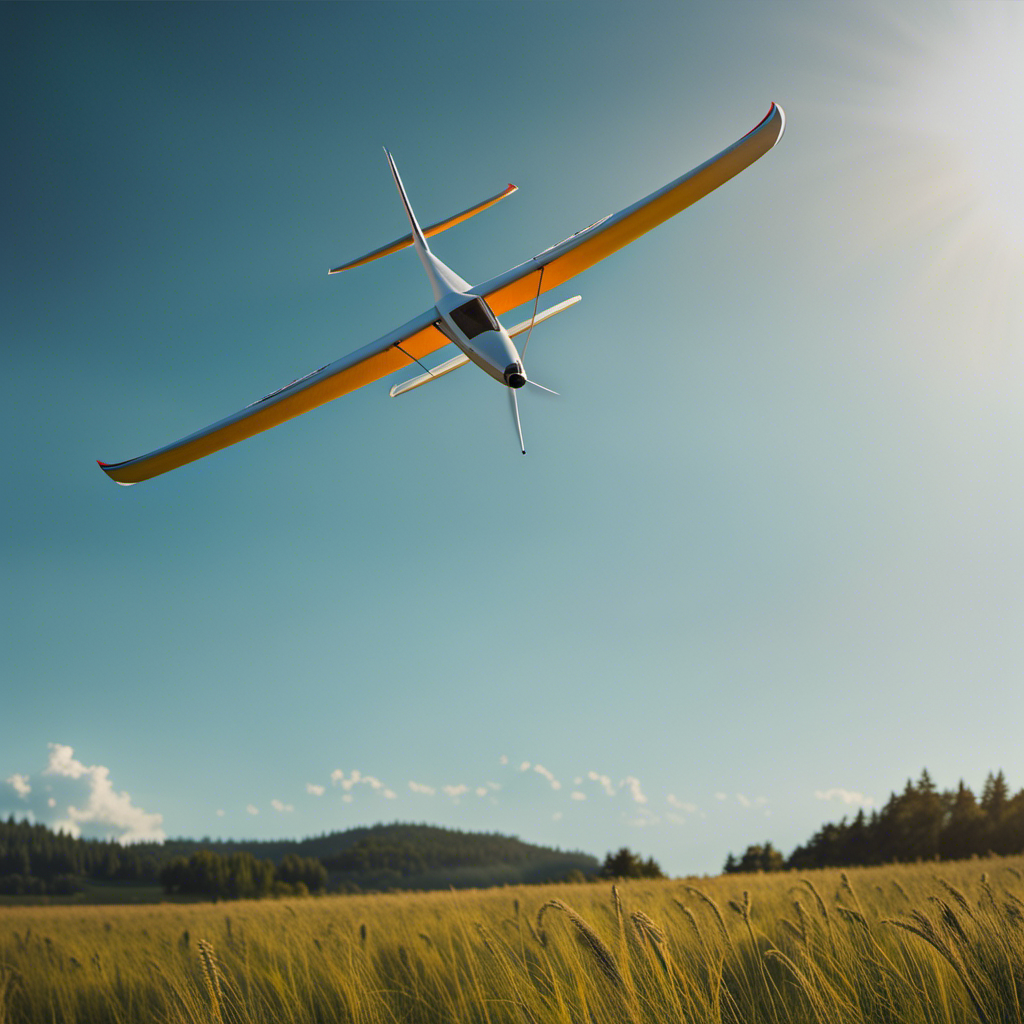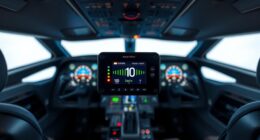Are you ready to take to the skies? Understanding the costs associated with gliding before embarking on your high-flying adventure is essential. Don’t worry, we’re here to help you navigate through it.
In this article, we’ll provide you with all the essential information you need to know before buying a sailplane. From factors affecting the price to researching different brands, setting a budget, and consulting with experts, we’ll guide you through every step of the process.
So, buckle up and get ready to navigate the sky with confidence.
Key Takeaways
- Dealerships, shows, and online marketplaces are valuable resources for exploring and comparing sailplane options.
- Buying a used sailplane can offer significant cost savings and the potential for pre-installed upgrades, but thorough inspection and testing are necessary.
- Used sailplanes generally have a lower price and established performance, but may require more frequent maintenance and may not come with a warranty or limited coverage.
- When purchasing a sailplane, it is important to carefully inspect and test the condition, negotiate the price, consider long-term costs, and review the terms and conditions before finalizing the purchase.
Factors Affecting Sailplane Price
When considering factors affecting sailplane price, you’ll want to take into account the age and condition of the aircraft. These two factors can greatly impact the cost of the sailplane.
Older sailplanes, although they may have a lower initial purchase price, may require more maintenance and repairs, which can increase the overall cost in the long run. On the other hand, newer sailplanes tend to have a higher price tag due to their advanced features and technology.
Additionally, the condition of the sailplane plays a crucial role in determining its value. A well-maintained sailplane with minimal wear and tear will generally have a higher price compared to one that requires significant repairs.
Understanding the age and condition of a sailplane is essential for making an informed decision about its price.
Now, let’s dive into understanding pricing structures.
Understanding Pricing Structures
Understanding the pricing structures for sailplanes can help you make a more informed buying decision. When it comes to sailplane prices, there are a variety of factors that can influence the cost. To make it easier for you to understand, here’s a table breaking down the main elements that contribute to the pricing structures of sailplanes:
| Factors | Description |
|---|---|
| Size | Larger sailplanes generally tend to be more expensive due to the increased materials and manufacturing costs. |
| Materials | The type of materials used, such as carbon fiber or fiberglass, can impact the price of a sailplane. Carbon fiber sailplanes are usually more expensive. |
| Features | Additional features like retractable landing gear, advanced avionics, or improved safety systems can drive up the price. |
| Brand Reputation | Established and reputable sailplane brands often come with a higher price tag due to their quality and performance track record. |
Now that you have a better understanding of sailplane pricing structures, let’s move on to researching different sailplane brands to find the best option for you.
Researching Different Sailplane Brands
Researching different sailplane brands can help you find the best option for your needs. With so many brands available, it’s important to gather information and compare them before making a decision.
Here are a few things to consider:
-
Performance: Look for brands known for their high performance and reliability. Check reviews and talk to experienced pilots to get insights into the capabilities of different sailplanes.
-
Features: Consider the features that are important to you, such as the type of cockpit layout, wing design, and safety features. Each brand may offer unique features that cater to specific preferences.
-
Customer Support: Look for brands that provide excellent customer support. This includes availability of spare parts, technical assistance, and warranty coverage.
Setting a Budget and Financial Considerations
When it comes to purchasing a sailplane, there are several key financial considerations to keep in mind.
First and foremost, determining your price range is essential in order to narrow down your options and find a sailplane that fits within your budget.
Additionally, exploring financing options and payment plans can help make the purchase more feasible and manageable.
Determining Your Price Range
To figure out your price range for a sailplane, you’ll want to take into account your budget and any financing options available.
Sailplanes can vary greatly in price depending on factors such as size, age, and features. Generally, prices can range from around $30,000 to over $200,000 for new sailplanes.
If you’re on a tight budget, you may consider looking into used sailplanes, which can often be found at more affordable prices.
Additionally, it’s important to consider the ongoing costs of owning a sailplane, such as maintenance, storage, and insurance.
By carefully considering your budget and financial situation, you can determine a price range that aligns with your needs and capabilities.
Now, let’s delve into the different financing options and payment plans available to help you make your sailplane dreams a reality.
Financing Options and Payment Plans
If you’re considering financing a sailplane, it’s important to explore the different options and payment plans available. Financing a sailplane can be a great way to make your dream of owning one a reality.
One option to consider is obtaining a loan from a bank or a specialized lender. They can offer competitive interest rates and flexible repayment terms.
Another option is leasing, which allows you to use the sailplane for a specific period of time in exchange for regular payments.
Additionally, some sailplane manufacturers offer in-house financing plans that may be tailored to your specific needs.
Before making a decision, it’s crucial to carefully review the terms and conditions of each option and consider your financial situation.
Consulting with experts and experienced pilots can provide valuable insights and help you make an informed choice.
Consulting with Experts and Experienced Pilots
Before you make a purchase, consult with experts and experienced pilots to gather valuable insights and advice on sailplane prices. These individuals have firsthand knowledge of the market and can provide you with information on current trends and pricing. They can also offer guidance on what to look for in a sailplane and help you determine if the price is fair based on the condition and specifications of the aircraft.
Additionally, experts and experienced pilots can advise you on the best places to search for sailplanes, both online and offline. They may have insider tips on where to find the best deals or negotiate a better price. By consulting with these knowledgeable individuals, you can make a more informed decision when it comes to purchasing a sailplane.
Now that you have gathered insights from experts and experienced pilots, it’s time to move on to comparing prices and shopping around for the best deal.
Comparing Prices and Shopping Around
When it comes to comparing prices and shopping around for a sailplane, there are a few key points to consider.
First, visiting sailplane dealerships and shows can give you the opportunity to see a variety of models up close and personal. This allows you to compare features, talk to experts, and potentially negotiate a better deal.
Additionally, online marketplaces and auctions can provide a wide range of options, allowing you to browse through different sailplanes and compare prices from the comfort of your own home. These platforms often have detailed descriptions and photos, making it easier to make informed decisions.
Visiting Sailplane Dealerships and Shows
Visiting sailplane dealerships and shows can provide valuable insights and opportunities to see different models up close. When you visit these locations, you can speak directly with knowledgeable staff who can answer all your questions and provide in-depth information about each sailplane. Additionally, you can physically examine the sailplanes, inspecting their construction, features, and overall condition. This hands-on experience allows you to assess the quality and craftsmanship of the sailplane, ensuring that it meets your standards. To further assist you in your search, here is a table comparing prices of different sailplane models available at dealerships and shows:
| Sailplane Model | Price Range |
|---|---|
| Model A | $50,000-$60,000 |
| Model B | $70,000-$80,000 |
| Model C | $90,000-$100,000 |
| Model D | $110,000-$120,000 |
| Model E | $130,000-$140,000 |
Online Marketplaces and Auctions
To find a sailplane within your budget, check out online marketplaces and auctions where you can browse a wide selection of models. These platforms offer a convenient way to explore various options and compare prices from the comfort of your own home.
Here’s what you can expect when searching for sailplanes online:
-
Diverse Selection: Online marketplaces and auctions provide access to a vast array of sailplane models, ranging from entry-level to high-performance options.
-
Different Manufacturers: You’ll find sailplanes from renowned manufacturers such as Schleicher, Schempp-Hirth, and DG Flugzeugbau.
-
Various Configurations: Whether you’re looking for single-seaters or two-seaters, self-launching motor gliders, or pure gliders, you’ll find a range of configurations to suit your needs.
Evaluating Used vs. New Sailplanes
When it comes to buying used sailplanes, there are both pros and cons to consider.
On the positive side, buying used can often save you a significant amount of money compared to buying new.
However, it’s important to thoroughly inspect and test a used sailplane before making a purchase to ensure that it is in good condition and meets your needs.
Pros and Cons of Buying Used
If you’re considering purchasing a used sailplane, there are several pros and cons to keep in mind.
Buying used can offer significant cost savings compared to buying a new sailplane. However, it’s important to carefully evaluate the condition and history of the aircraft.
Here are some key points to consider:
- Lower price: Used sailplanes are generally more affordable than new ones.
- Established performance: You can research and find reviews on the specific model to know its performance capabilities.
- Modifications: Used sailplanes may come with modifications or upgrades already installed.
- Potential wear and tear: Used sailplanes may have more wear and tear, requiring more frequent maintenance.
- Limited warranty: Unlike new sailplanes, used ones may not come with a warranty or it may be limited.
Before finalizing your decision, it is crucial to thoroughly inspect and test the used sailplane to ensure it meets your requirements and is in good condition.
Inspecting and Testing Used Sailplanes
Now that you understand the pros and cons of buying a used sailplane, it’s time to dive into the next crucial step: inspecting and testing the aircraft.
This stage is essential to ensure you’re making a wise investment. Begin by carefully examining the exterior and interior of the sailplane, checking for any signs of damage or wear. Pay close attention to the wings, fuselage, and control surfaces.
Next, move on to testing the systems and instruments. Check the functionality of the flight controls, landing gear, and electrical components. It’s also important to evaluate the sailplane’s performance during a test flight. Assess its handling, responsiveness, and overall flight characteristics.
By thoroughly inspecting and testing the used sailplane, you’ll gain valuable insights into its condition and suitability for your needs.
Now, let’s move on to the next crucial aspect: negotiating and bargaining for the best price.
Negotiating and Bargaining
Before you start negotiating the price of a sailplane, it’s important to do your research and understand its market value. Here are three key points to keep in mind:
-
Gather information: Begin by researching the average prices of sailplanes similar to the one you’re interested in. Look through classified ads, online forums, and consult with experienced pilots to get an idea of the market value. This will give you a strong starting point for negotiations.
-
Assess the condition: Carefully inspect the sailplane for any damages or maintenance issues that may affect its value. Consider factors such as the age of the aircraft, the number of flight hours logged, and the overall condition of the airframe, engine, and avionics. A thorough evaluation will help you determine a fair price based on its current state.
-
Bargain effectively: When negotiating, be confident and have a clear understanding of the sailplane’s worth. Start with a reasonable offer and be prepared to counteroffer. Keep in mind that negotiating is a give-and-take process, so be willing to compromise to reach a mutually beneficial agreement.
Considering the long-term costs and ownership expenses, it’s important to carefully evaluate the financial implications of owning a sailplane.
Considering Long-Term Costs and Ownership Expenses
To accurately assess the financial implications of owning a sailplane, it’s crucial to carefully evaluate the long-term costs and ownership expenses.
When considering the long-term costs, you need to take into account the maintenance and storage fees, insurance premiums, and potential repair expenses. These costs can vary depending on the type and age of the sailplane, as well as the location and regulations in your area.
Additionally, you should also consider the ownership expenses, such as club membership fees, fuel costs, and any additional training or certification requirements.
Finalizing the Purchase
When finalizing your purchase, it’s important to carefully review the terms and conditions of the agreement. This will ensure that you fully understand your rights and obligations as a buyer.
Here are some key things to consider before finalizing your sailplane purchase:
-
Warranty coverage: Check the duration and extent of the warranty offered by the manufacturer or seller. Make sure you understand what is covered and what is not.
-
Delivery and shipping: Clarify the delivery timeline and any associated costs. It’s important to know when and how your sailplane will be delivered to you.
-
Payment terms: Understand the payment schedule and methods accepted. Be aware of any additional fees or charges that may be applicable.
-
Return policy: Familiarize yourself with the return policy in case you need to return or exchange the sailplane.
-
After-sales support: Find out what kind of after-sales support is provided by the manufacturer or seller. This can be crucial in case you encounter any issues or need assistance with your sailplane.
Conclusion
In conclusion, buying a sailplane can be an exciting and rewarding experience. However, it is important to carefully consider the factors that can affect the price. These factors include the brand, condition, and age of the sailplane. Researching different brands and consulting with experts and experienced pilots can provide valuable insights.
One interesting statistic to note is that the average cost of a new sailplane ranges from $60,000 to $400,000, depending on the features and specifications. Imagine soaring through the skies in your very own high-performance sailplane, a true embodiment of freedom and adventure.
With a heart that soars as high as the skies, Aria, affectionately known as “Skylark,” is the driving force behind Soaring Skyways. Her journey into the gliding world began as a young dreamer gazing up at the soaring birds, yearning to experience the weightlessness and freedom they embodied. With years of experience both in the cockpit and behind the scenes, Aria’s commitment to the gliding community is unwavering.










